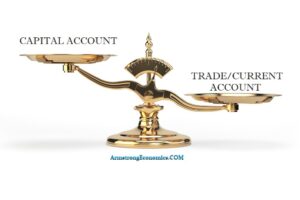Understanding Capital and Current Accounts: Debunking Myths and Insights from Extreme Investor Network

If you’ve ever felt confused by economic terms like “capital account” and “current account,” you’re not alone. These concepts are often misrepresented, particularly in political debates. At Extreme Investor Network, we believe that clarity is key to understanding how global economic interactions shape our financial landscape.
What Are Capital and Current Accounts?
To put it simply, the capital account tracks the flow of money in and out of a country related to investments, while the current account monitors the trade of goods and services, as well as income payments. Understanding the dynamics between these accounts can offer valuable insights into a nation’s economic health.
Misconceptions About Trade Deficits
A common misconception is that trade deficits are inherently negative. However, a nuanced analysis shows that trade deficits can coexist with a booming economy. Notably, during Ronald Reagan’s presidency, the U.S. experienced rising trade deficits but simultaneously enjoyed significant economic growth.
What accounts for this paradox? The answer lies in capital movements. The capital account can offset trade deficits through foreign investments in U.S. assets, such as Treasury bonds, real estate, and business holdings. When foreign capital flows into the U.S., it can counterbalance the outflow of dollars associated with a trade deficit.
The Role of Interest Rates
Historically, periods of elevated interest rates—like those enforced by former Federal Reserve Chairman Paul Volcker—attracted considerable foreign investment. The dollar’s strength enabled the U.S. to leverage lower inflation rates while fulfilling its international obligations. However, as interest payments flow through the current account, they don’t pertain solely to goods or services; they often reflect debt servicing, complicating the perception of trade balances.
Taxes: The Hidden Factor in Manufacturing Exodus
While tariffs are often blamed for declining manufacturing in the U.S., we must examine another culprit: taxes. Local and state taxes compounded by federal taxes have driven many companies offshore, not simply for lower labor costs, but primarily due to the overwhelming burden of tax compliance.
For instance, in Michigan, a flat corporate tax rate of 6% coupled with municipal taxes can deter businesses. Such obstacles force companies to seek more favorable environments abroad. Moreover, the Supreme Court’s ruling on global income tax obligations intensifies this issue, leading entrepreneurs to make tough decisions about where to base their operations.
The Broader Implications of the Current Account
The current account reflects the U.S. as a net borrower globally, underscoring our reliance on foreign capital. Let’s break down its primary components:
-
Trade in Goods and Services
- Exports: Physical goods sold globally (e.g., machinery, agricultural products).
- Imports: Goods purchased from abroad—often resulting in a goods trade deficit for the U.S.
-
Primary Income
- Investment Income: Earnings from U.S. investments held overseas (e.g., dividends, interest).
- Compensation of Employees: Wages for U.S. citizens working abroad added to earnings from foreign investments.
- Secondary Income
- Captures government grants and private remittances, revealing the holistic inflows and outflows affecting the current account.
Conclusion: A Comprehensive Analysis
A persistent current account deficit may appear alarming, but it often reflects deeper economic realities. It suggests the U.S. reliance on foreign investment to fund consumption and development. The dual account system—capital and current—reveals how interconnected our global economic network is.
At Extreme Investor Network, we systemically evaluate these intricacies, empowering you with knowledge to navigate and capitalize on financial opportunities. Understanding these dynamics enriches your investment strategy, allowing for informed decisions that transcend standard economic rhetoric.
For more unique insights and tailored economic analyses, explore our community at Extreme Investor Network, where informed investing meets expert knowledge!

